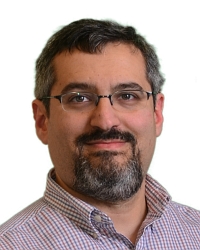TR2018-053
Secrecy Performance Analysis of Distributed CDD based Cooperative Systems with Jamming
-
- , "Secrecy Performance Analysis of Distributed CDD based Cooperative Systems with Jamming", IEEE International Conference on Communications (ICC), DOI: 10.1109/ICC.2018.8422679, May 2018.BibTeX TR2018-053 PDF
- @inproceedings{Kim2018may,
- author = {Kim, Kyeong Jin and Liu, Hongwu and Di Renzo, Marco and Orlik, Philip V. and Poor, H. Vincent},
- title = {{Secrecy Performance Analysis of Distributed CDD based Cooperative Systems with Jamming}},
- booktitle = {IEEE International Conference on Communications (ICC)},
- year = 2018,
- month = may,
- doi = {10.1109/ICC.2018.8422679},
- url = {https://www.merl.com/publications/TR2018-053}
- }
- , "Secrecy Performance Analysis of Distributed CDD based Cooperative Systems with Jamming", IEEE International Conference on Communications (ICC), DOI: 10.1109/ICC.2018.8422679, May 2018.
-
MERL Contact:
-
Research Areas:
Abstract:
In this paper, a cooperative cyclic-prefixed single carrier (CP-SC) system to improve physical layer security is investigated. By considering a distributed cyclic delay diversity dCDD) scheme, a jamming method is proposed to maximize the signal-to-noise ratio (SNR) over the channels from the transmitters to the legitimate user, while degrading the signal-tointerference-plus-noise ratio (SINR) over the channels from the transmitters to the illegitimate user. A CDD transmitter among the set of CDD transmitters is selected as the sentinel transmitter, and it transmits a jamming signal to the illegitimate user. The sentinel transmitter is the transmitter that provides the best channel gain in order to maximize the SNR at the legitimate user and minimize the SINR at the non-legitimate users. This allow us to enhance the security of the CP-SC system. New closed form expressions for the SNR and SINR for the dCDD protocol are derived for frequency selective fading channels. Monte-Carlo simulations are conducted to verify the analytic derivations of the performance metrics for various simulation scenarios.
